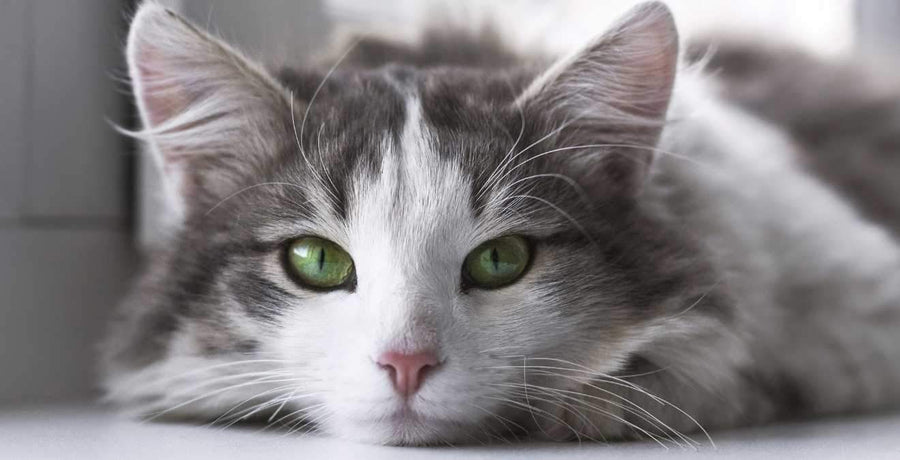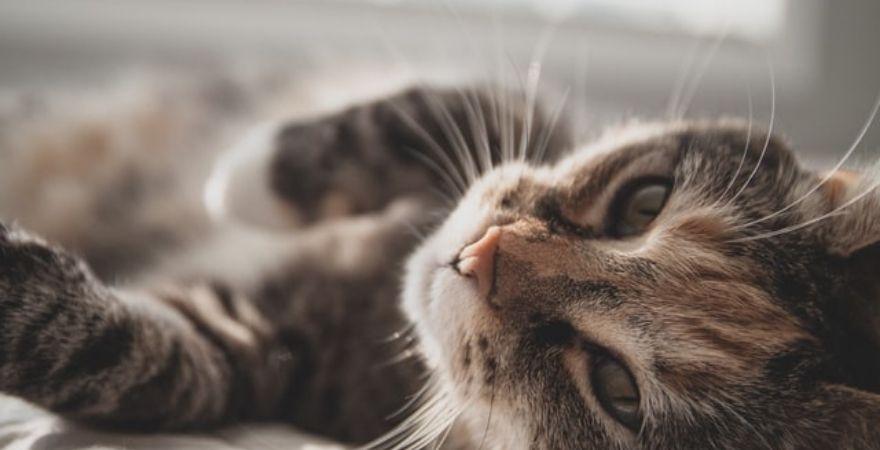Article at a Glance
Feline diabetes mellitus, or simply diabetes, is a chronic health condition that affects the way the body deals with sugar. Most cats can be well managed and, for some, their condition may even be reversible.
- The diabetes symptoms include an increased appetite, weight loss and an unquenchable thirst.
- Those who are over-weight and consume an inappropriate diet are most at risk.
- If left untreated, diabetes can cause serious health issues and even death
What Is Diabetes in Cats, and How Do Cats Get It?
Diabetes in cats can either be ‘Type 1’ or ‘Type 2’. Both types are seen in our feline patients. We see Type 2 more commonly. So, what causes diabetes in cats?
Type I diabetic cats may be genetically prone to the condition. Their pancreas is not producing insulin as it should, so blood glucose is not being absorbed into cells. There is an autoimmune destruction of the pancreatic cells. This is a rare disease in cats, though is more common in dogs.
Type II diabetes means the cells aren’t responding to the insulin that is being produced. Affected cats tend to be over-weight, at least before they become unwell. Many eat an inappropriate diet containing too much sugars and carbohydrates.
A relatively common disease, up to 1% of all cats may eventually become diabetic.
What Are the Symptoms of cats with diabetes?
The diabetes symptoms in cats are easy to spot. They can come on relatively quickly or may appear more slowly over time. Cats with diabetes can show the following signs:
- An increased appetite, to the point of begging and scrounging for food. This is because the sugar is not getting to the cat’s cells so the body thinks it has not been fed.
- Weight loss due to the inability of the cell’s energy source to be used.
- Excessive thirst and urination because of the excess sugar being passed in the urine.
- Frequent urination or blood in the urine due to chronic bacterial infections of the urinary tract. The sugar within the urine acts as a food source for bacteria.
Treatment Methods for Feline Diabetes
When it comes to how to treat a diabetic cat, offering the right diet is key. The cat owners must give alongside insulin for those who have been prescribed shots. Most cats will eat twice daily, receiving their insulin injection after their meal has been finished.
We should feed a diet high in proteins and low carbohydrates. There are many prescription foods on the market that fit the bill. Home-made diets can be difficult to get right and should only be trialled under the supervision of a nutritionist.
Stay well away from snacks and treats as they’ll spike blood sugar levels. Really, we do not want our cat to eat in between meals at all. His meals should be around the same time each day, so his body knows when to expect the insulin injections.
An unneutered female cat would need to be spayed as progesterone can make it very difficult to stabilise a diabetic patient.
Finally, exercise should be consistent. Exercise is important for maintaining muscle and burning calories. It is also a vital part of stimulation for your kitty. However, overdoing it can affect blood sugar levels and is not advised.
Stabilisation
Some cats present to the veterinary clinic in diabetic ketoacidosis. These cats are critically unwell and may have had undiagnosed diabetes for some time. Many mistake the diabetes symptoms in cats for a ‘cat who loves their food’. The aim is to stabilize these kitties, and they may be hospitalized for quite a few days.
At the start of any diabetic cat’s treatment, it may take a while to find the right dose of insulin for them. This can mean several vet visits for blood sugar tests and dose adjustments. For many owners and feline patients, this is a stressful time.
Once we have hit upon the right insulin dose, the treatment becomes much more straightforward. However, kitties still require frequent vet visits and at-home monitoring. A staggering 84% of well-controlled diabetic cats can go into remission within the first 6 months.
Routine check-ups are essential for cats with diabetes. This will usually entail blood and urine tests, to monitor your cat’s blood sugar levels. Oftentimes, the insulin injections dose will need adjusting. Some owners will feel confident to measure blood sugar or urine sugar levels at home. This can make controlling the disease much easier and less stressful for the cat.
How Do You Prevent Diabetes in Cats?
Certain conditions can make a cat more prone to diabetes. These include pancreatitis and hyperthyroidism. Be sure to have your cat seen by a vet regularly, so any health issues can be managed promptly.
We also know that kitties on long-term steroids are at a much higher risk of becoming diabetic. Vets should be aware of this and should use steroids as a long-term treatment, only when absolutely necessary. Those owners whose cats are on steroids should know the symptoms of diabetes in cats to be on the lookout for.
For all cats, keeping them on a high-quality diet is important, as is ensuring they are a healthy body condition score. Treats should not make up more than 10% of their diet.
We recommended this Kidney Vitalize Liquid Drops (Brand New) Product
About 10% to 15% of newly diagnosed diabetic cats will go on to develop Chronic Kidney Disease in the first 6 months. Kidneys need to work harder to filter all of the excess glucose and this can take its toll. Caring for out cats’ kidneys is important, especially if they’ve had a diagnosis of diabetes.
These Kidney Vitalize Liquid Drops are all-natural and can help maintain kidney function. They are highly palatable and very easily administered, even to a sensitive cat.
Final Thoughts
Feline diabetes is a condition that can be well-handled in most. For a large number of cats with diabetes, they can go into clinical remission with the right treatment. The sooner this treatment is started, the better the chance of this happening. This is why all owners should be aware of the symptoms of diabetes in cats.
- https://www.sciencedirect.com/science/article/abs/pii/S0303720702002654
- https://europepmc.org/article/med/19746667
- https://www.ncbi.nlm.nih.gov/pmc/articles/PMC6053045/
- https://journals.sagepub.com/doi/full/10.1177/0300985813516645
Dr. Linda Simon, BVMS, MRCVS
Veterinary surgeon
Dr. Linda Simon MVB MRCVS is a locum veterinary surgeon who has worked in London for the past 8 years. She graduated top of her class in small animal medicine from UCD, Dublin. She is currently a member of the Royal College of Veterinary Surgeons.



